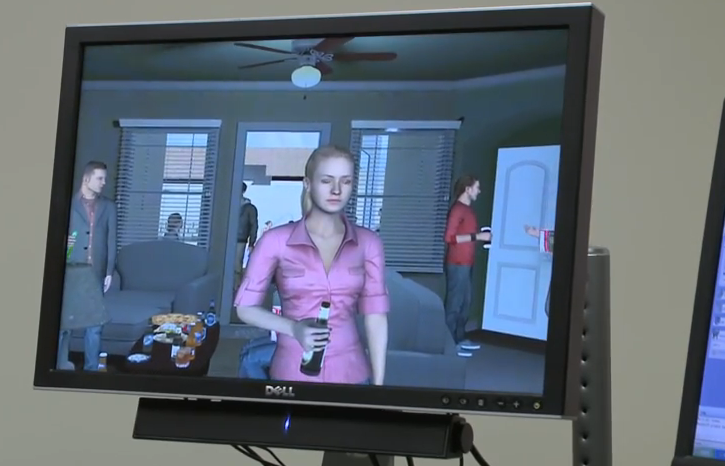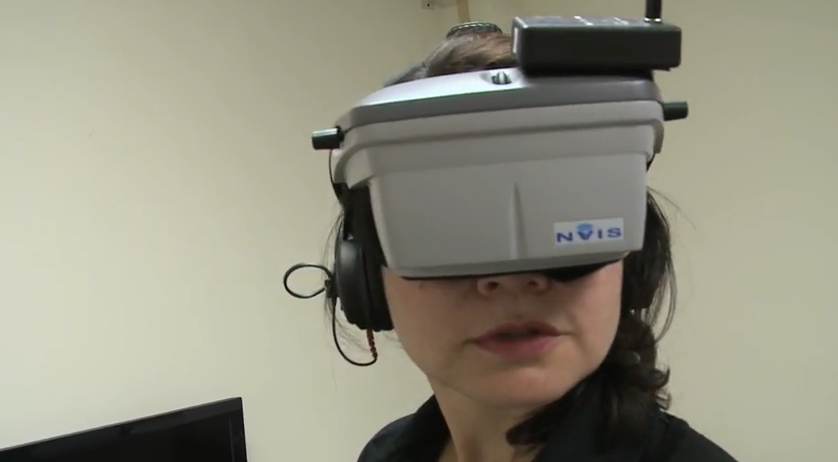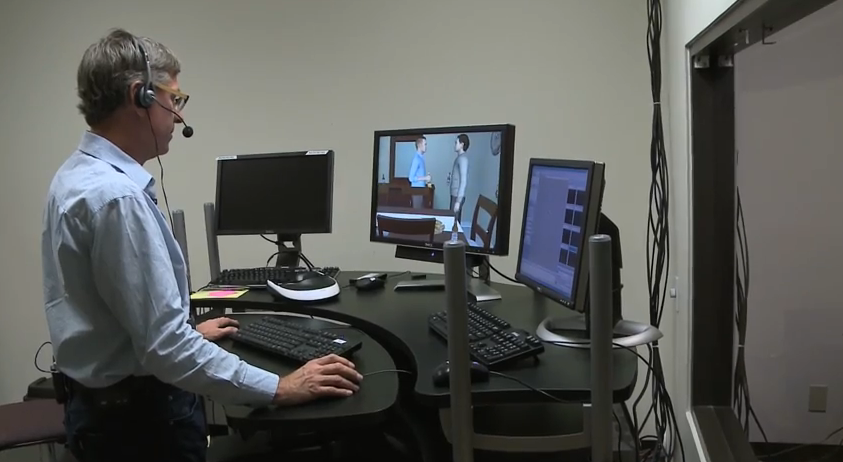“We’ve had smokers in our lab studies learn to refuse cigarettes,” said the lab’s founder and director, Patrick Bordnick, Ph.D., a UH Graduate College of Social Work professor. “Our current studies focus on alcohol. In the future, we’ve got several studies looking at injection drug use, people that are using heroin and opiates, using the same technology and methodology of studying craving in the lab, and then also teaching people skills to not use in relapse.”
The lab uses computer-generated virtual environments to help people with addictions, behavior and mental health.
“They’re not just sitting in a traditional therapist’s office, pretending they’re in that environment,” explained Bordnick. “We actually put them, or immerse in a virtual bar, or a virtual heroin-using situation. The therapist is in the environment with them and can teach them skills in real time, including skills to prevent relapse.”
 In spring 2014, the lab moved to a larger, more publicly accessible space on the first floor of the UH Graduate College of Social Work building. The new location will allow the lab to soon house new 3-D projection technology, in place of the traditional head-mounted virtual reality display equipment that is currently used.
In spring 2014, the lab moved to a larger, more publicly accessible space on the first floor of the UH Graduate College of Social Work building. The new location will allow the lab to soon house new 3-D projection technology, in place of the traditional head-mounted virtual reality display equipment that is currently used.
“It is a full, dual-screen system, with floor to ceiling projection screens and 3-D glasses, instead of head mounted virtual reality displays. This first floor location in the college expands what we do. It allows better access to people coming in for sessions,” explained Bordnick. “It also expands our capabilities. It is a larger lab, with a place where participants do the virtual environments and a separate control room next door where we can monitor them throughout the experiment or the treatment study.”
Currently, the lab is the only one of its kind in a college of social work studying addictions. But, Bordnick notes, when it started, it was the only lab in the world that studied virtual reality uses for addiction to look at craving and treatments.
 “From some of our addiction studies, the main things we’ve seen are skills that people learn in the virtual environments, in our lab, and then transfer to the real world,” said Bordnick. “One of the main things we do in our lab is study human behavior using virtual reality or virtual environments. Let’s say we wanted to study people’s drinking behavior. We would go into the real environment— into a bar — and watch people drink, and talk to them about craving and wanting a drink. What we can do in the computer is build a virtual bar here in the safe confidential environment of our lab.”
“From some of our addiction studies, the main things we’ve seen are skills that people learn in the virtual environments, in our lab, and then transfer to the real world,” said Bordnick. “One of the main things we do in our lab is study human behavior using virtual reality or virtual environments. Let’s say we wanted to study people’s drinking behavior. We would go into the real environment— into a bar — and watch people drink, and talk to them about craving and wanting a drink. What we can do in the computer is build a virtual bar here in the safe confidential environment of our lab.”
When it comes to tackling heroin addiction, Bordnick and his team are currently in the development stages of building several virtual environment scenarios.
 “The one thing that we strive for here is realism: sights, sounds, smells,” he explained. “Usually, people will come in once a week and do a 45 minute to an hour-long session. They go through the high risk environments where they would relapse, and they practice with a therapist teaching them skills.”
“The one thing that we strive for here is realism: sights, sounds, smells,” he explained. “Usually, people will come in once a week and do a 45 minute to an hour-long session. They go through the high risk environments where they would relapse, and they practice with a therapist teaching them skills.”
Related Link: http://www.uh.edu/socialwork/New_research/VRCRL/